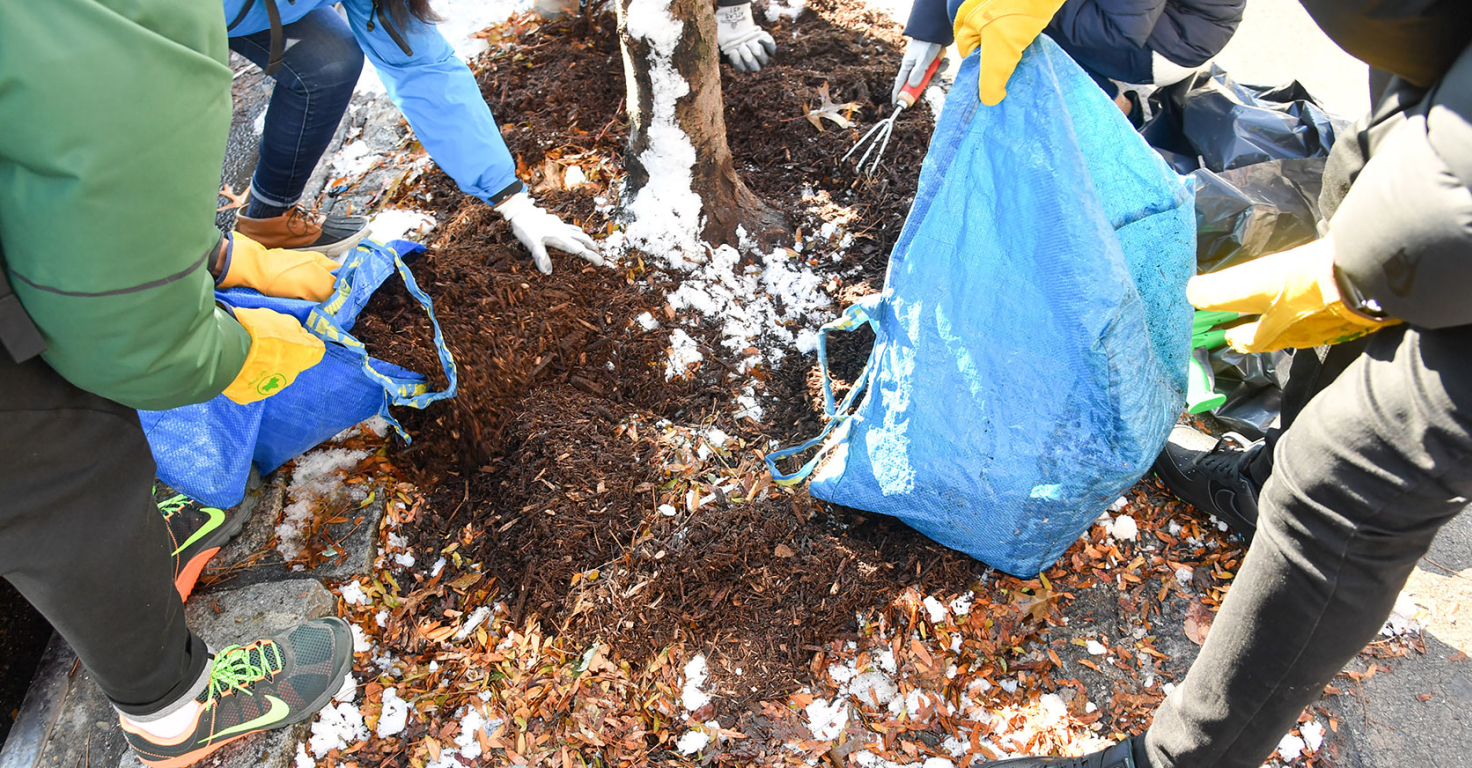Mulch, Compost, and Soil Maintenance
Mulch is roughly ground up wood from other trees, and can act as both a protective buffer and nutrient-rich layer for a young street tree. Spreading a 3-inch layer of mulch on a street tree bed can help prevent soil from becoming hard and compacted, making it easier for the tree’s roots to take in air and water. Mulch is also a great retainer of moisture, and can help prevent the soil from becoming extremely dry during a hot summer drought or high winter wind. In addition, spreading a 1-inch layer of compost, decomposed food, and yard clippings before placing the mulch will allow the soil to better hold air and water, drain more efficiently, and provide a nutrient reserve that the tree can feed on.
Too much mulch, compost, or building a mulch “volcano” around the base of the trunk can be harmful for the tree. Before any additions to the tree bed are made, it’s important to aerate the soil. See how it’s done below!
Tools You Can Use
- Gloves
- Cultivator
- Rake
- Bucket or Wheelbarrow
Guidelines
- To aerate the soil of your tree bed, take your hand cultivator and rough up the dirt 1-inch to 3-inches down. This will break up the compacted soil and allow more oxygen to get down to the roots.
- You can obtain mulch through stewardship events such as MulchFest and other street tree care workshops; or by becoming a Care Captain. You can buy mulch at gardening stores like Home Depot, and sometimes mulch is available for stewards in NYC’s parks.
- If you do not compost at your home or workplace, you can obtain compost from the NYC Compost Project offered by the NYC Department of Sanitation.
- Spread compost to cover the whole street tree bed. The layer should be no more than 2 inches high, and should not be touching the trunk of the tree. You should be able to fit your fist between the compost and the trunk.
- Spread mulch to cover the whole street tree bed. The layer should be no more than 3 inches and should not be touching the trunk of the tree. You should be able to fit your fist between the compost and the trunk.
- If you do not have enough mulch to cover the whole bed, build a ring of mulch 3 inches away from the tree trunk. You should be able to see the roots at the base of the tree taper off into the soil.
- Do not build a mulch volcano. A ‘mulch volcano’ is what happens when mulch is piled high and close to the tree trunk. This does not allow the roots and lower part of the trunk to interact with the atmosphere and encourages ‘girdling,’ a root problem that eventually causes the tree to strangle itself. Mulch volcanoes also create rot by building up too much moisture against the tree trunk.
- Although mulch can be applied at any time of year, spring and fall are best for young trees to help retain moisture and prepare for extreme seasonal temperatures.
